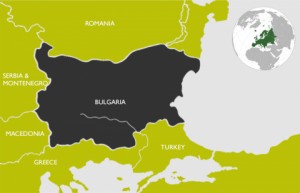We get an insight into the growing interest in high building performance in Bulgaria from Sefaira customer, Iva Delova of HomeNest. Her practice primarily designs low-energy buildings that use natural materials. She tells us how the Sefaira software is enabling her achieve ambitious sustainability goals in Bulgaria’s evolving construction industry.
1. What drives sustainability in the region?
The topic of energy efficiency is widely discussed in Bulgaria because a majority of the building stock is not energy efficient. In some cases, 60% of the total energy consumption in buildings can be attributed to waste. Compromised building systems and materials also have a negative and sometimes harmful effect on residents. All these factors as well as the unfortunate fact that Bulgaria has topped the charts for energy waste drives the theme of sustainability in the construction industry, as it is crucial for the development of the country and for improving our quality of life. In the last few years we’ve seen international certification systems such as BREEAM, LEED and PassivHaus enter into the Bulgarian market. In addition the regional DGNB rating has also been established.
2. Are certain aspects of sustainability & high performance design more important in Bulgaria?
The country is implementing measures to improve the energy efficiency of residential and public buildings between 2014 and 2020 in accordance with the requirements of the European Performance of Buildings Directive. (For more, see the Cleantech Bulgaria Report) There will also be a renovation and overall improvement of the urban environment. Solutions such as “The Smart House” and “Zero Energy Buildings” are becoming more popular and many customers are interested in building with natural raw materials – such as straw, timber, stone and clay. These choices have a serious impact on the sustainability and life time of the building.
3. How do construction stakeholders approach sustainability?
Sustainability in Bulgaria is mainly approached from an energy perspective with a focus on efficiency and the use of renewable energy sources.
4. Is there a benchmark building that exemplifies sustainable architecture in the region? Are there notable architects that drive sustainability?
There are three BREEAM, two LEED and three DGNB certified buildings in Bulgaria, as well as a few houses with PassivHaus certification. Project-Image One of our projects, a detached family residence near Sofia, specifically aims to maximise its energy saving potential through the following strategies: Improved Envelope performance One of the strategies employed is the use of low cost natural materials such as straw bale walls. This renewable and locally sourced material reduces the building’s embodied carbon values and whilst its great insulation properties simultaneously improve the building’s energy efficiency. By specifying it we were able to reduce the Annual Carbon Footprint by 13% and specify a wall u-factor of 0,11W/m2K, which is close to the PassivHaus value. Eliminate Mechanical Cooling by adding shading and leveraging natural ventilation To achieve a comfortable temperature in the summer without using mechanical cooling, the glazed south and west facades are shaded by overhanging eaves and external blinds – reducing overheating by 16% in the summer. These measures in combination with natural ventilation provide year-round comfort in the building without the need for mechanical cooling. Harvest 22% of total energy through Photovoltaics Using Sefaira, we were able to find a renewable strategy that reduced Annual Energy Consumption by 18%. PVs on the southern slope of the roof will provide 1200kWh of electricity, almost 22% of the building’s total energy consumption. Rainwater harvesting Rainwater will also be harvested to reduce the consumption of potable water and consequently the utility costs.
5. What strategies most interest designers in this region?
Designers are generally interested in finding the ideal building location, improving envelope performance, reducing the overall energy demand and employing strategies such as solar energy harvesting and water efficiency.
6. What aspects of building design do you tend to focus on?
At HomeNest, we value the use of natural materials. Innovative tools such as Sefaira enable us to advance sustainable design in the region. We hope to achieve affordable zero energy and carbon neutral homes through our efforts.
7. What challenges do designers face when creating sustainable buildings?
One great challenge is to clearly communicate all aspects of sustainable design to clients — particularly demonstrating that sustainable solutions can be affordable and effective. The challenge is to justify the capital and operational costs attributed to the design by demonstrating the short and long term benefits of a high performing building. Thanks to Sefaira, we are able to effectively present various design strategies side by side to the building developer, communicate paybacks for each option, and make strategic design decisions

